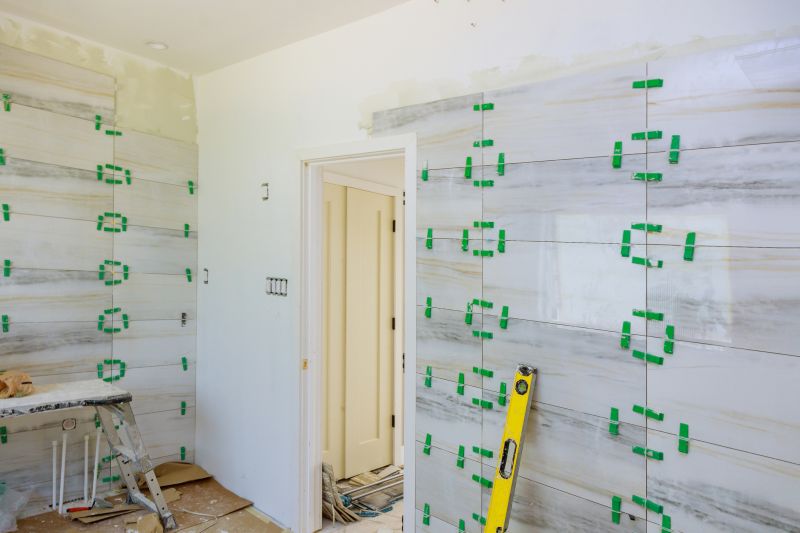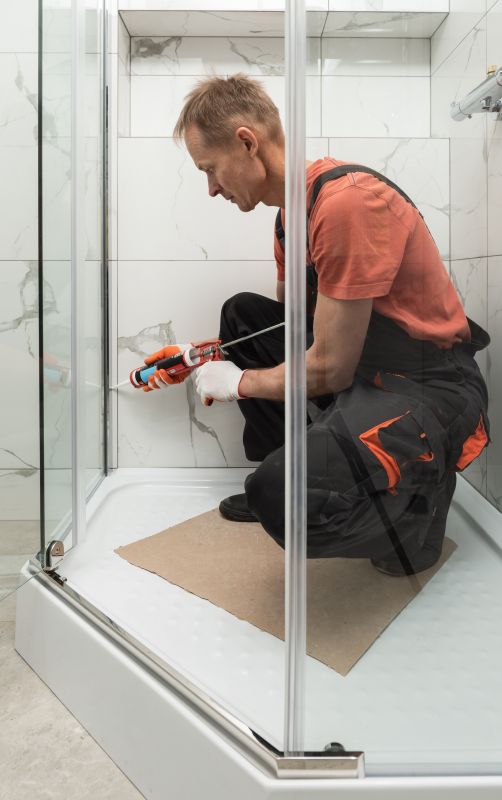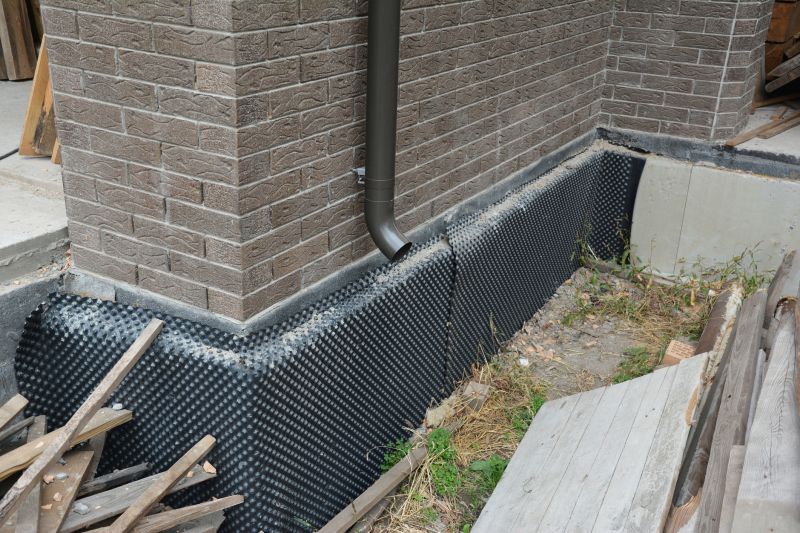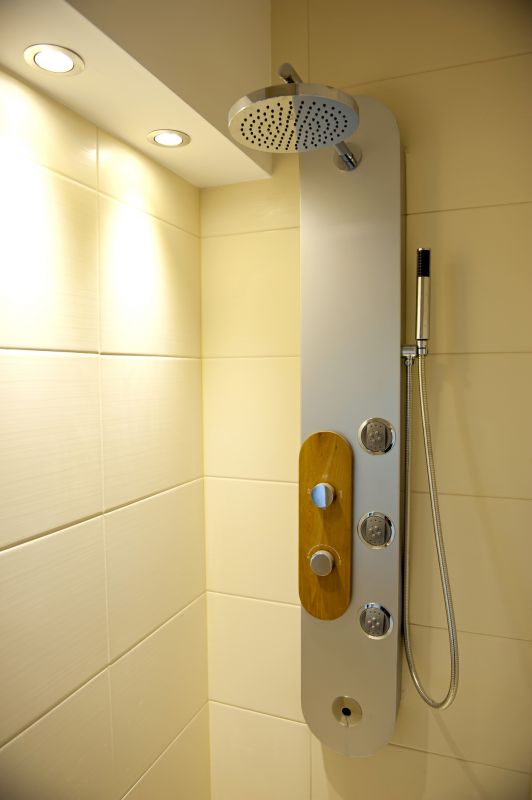Shower Waterproofing Techniques
Welcome to Aberdeen Showers
Shower Waterproofing Techniques

Understanding Shower Waterproofing Techniques for Homeowners
Shop for Shower Waterproofing Techniques
Shower waterproofing is a crucial aspect of bathroom design and renovation that ensures the longevity and functionality of your shower space. Waterproofing involves creating a barrier that prevents water from seeping into walls and floors, which can lead to structural damage and mold growth. For homeowners, understanding the various waterproofing methods and materials available is essential to making informed decisions that will protect their investment.
One of the primary considerations in shower waterproofing is selecting the right materials. Common options include waterproof membranes, liquid waterproofing compounds, and waterproof backer boards. Each material has its own set of advantages and limitations, and the choice often depends on the specific requirements of the shower area, such as size, design, and existing conditions.
Waterproof membranes are popular due to their durability and effectiveness in creating a watertight seal. These membranes can be sheet-based or liquid-applied, offering flexibility in application. Sheet membranes are typically installed beneath tiles and provide a robust barrier against moisture. Liquid membranes, on the other hand, are applied with a brush or roller, forming a seamless and continuous layer.
In addition to membranes, waterproof backer boards are another option for ensuring a moisture-resistant shower. These boards are installed behind tiles and provide a solid, waterproof surface that helps prevent water penetration. They are often made from cement or foam and are designed to withstand the humid conditions of a bathroom environment.
When planning a shower waterproofing project, it's important to consider the specific needs of your bathroom. Factors such as the type of tiles, the shower's location, and the existing plumbing infrastructure can influence the choice of waterproofing method. Consulting with a knowledgeable source or conducting thorough research can help determine the most suitable approach for your situation.
Maintenance is another key aspect of shower waterproofing. Regular inspections and upkeep can help identify potential issues early and prevent costly repairs. Ensuring that grout lines are intact and that there are no cracks or gaps in the waterproofing materials can extend the life of your shower and maintain its integrity.
- Waterproof Membranes
- Liquid Waterproofing Compounds
- Waterproof Backer Boards
- Seamless Liquid Applications
- Sheet Membranes
In conclusion, shower waterproofing is a vital component of bathroom maintenance and design. Whether you're renovating an existing space or building a new one, understanding the different waterproofing options and their applications can help you make informed decisions. By selecting the appropriate materials and maintaining them properly, homeowners can ensure a durable and moisture-resistant shower environment.
Glossary:
- Waterproof Membrane: A barrier that prevents water from penetrating surfaces.
- Liquid Waterproofing: A fluid applied to surfaces to create a waterproof layer.
- Backer Board: A moisture-resistant board used as a substrate for tiles.
- Grout Lines: The spaces between tiles filled with grout to prevent water ingress.
Understanding Shower Waterproofing Types
Shop for Shower Waterproofing Techniques
A Comprehensive Guide to Different Waterproofing Methods
Waterproofing a shower is an essential part of bathroom construction and renovation, ensuring that water does not seep into the walls or floor, which could lead to structural damage and mold growth. Understanding the different types of waterproofing available can help homeowners make informed decisions about their bathroom projects.
One common method is the use of liquid waterproofing membranes. These are applied as a liquid coat that forms a seamless membrane over the shower area. Liquid membranes are popular because they can easily adapt to any shape or size of the shower, providing a continuous barrier against water intrusion.
Another option is sheet membranes, which are pre-formed sheets that are applied to the shower substrate. These sheets are typically made from materials like polyethylene or rubberized asphalt, offering a durable and robust waterproofing solution. They are often preferred for their consistency and the added layer of protection they provide.
Cementitious waterproofing is also widely used, particularly in new constructions. This method involves the application of a cement-based mixture that creates a waterproof barrier. It is known for its ease of application and is often used in conjunction with other waterproofing methods for enhanced protection.
Some homeowners may consider using foam backer boards as part of their waterproofing strategy. These boards are lightweight and easy to install, providing both insulation and a waterproof barrier. They are often used in combination with other waterproofing materials to ensure comprehensive coverage.
- Liquid Waterproofing Membranes
- Sheet Membranes
- Cementitious Waterproofing
- Foam Backer Boards
When planning a shower waterproofing project, it is crucial to consider the specific needs of the bathroom environment, including factors like humidity levels and the type of materials used in the shower's construction. Proper planning can prevent future issues and extend the life of the waterproofing system.
Regular maintenance of the waterproofing system is also important. This includes checking for any signs of wear or damage and addressing them promptly to prevent leaks. Understanding the terminology associated with shower waterproofing can further aid in maintaining the integrity of the system.
Glossary:
- Membrane: A barrier that prevents water from passing through.
- Substrate: The underlying layer or surface to which a waterproofing material is applied.
- Cementitious: Composed of or resembling cement.

Planning and Maintenance for Shower Waterproofing
Shop for Shower Waterproofing Techniques
Key Considerations for Layout and Long-term Care
Waterproofing a shower is an essential aspect of bathroom design that ensures the longevity and safety of the space. Proper planning and maintenance can prevent water damage, mold growth, and structural issues. Understanding the various components involved in shower waterproofing can help homeowners make informed decisions about their bathroom renovations or new constructions.
One of the primary considerations in shower waterproofing is the choice of materials. Common waterproofing materials include liquid membranes, sheet membranes, and foam backer boards. Each of these materials has its own advantages and is suitable for different types of installations. Liquid membranes, for example, offer flexibility and can easily cover irregular surfaces, while sheet membranes provide a consistent thickness and are often used in conjunction with tile installations.
Layout planning is another critical aspect of waterproofing. This involves ensuring that all surfaces, including walls, floors, and joints, are adequately covered with waterproofing material. Special attention should be given to corners and edges, as these areas are particularly susceptible to water ingress. A well-thought-out layout can significantly reduce the risk of leaks and water damage over time.
Regular maintenance is crucial to the effectiveness of shower waterproofing. Homeowners should routinely inspect their showers for signs of wear and tear, such as cracked tiles, missing grout, or peeling sealant. Addressing these issues promptly can prevent minor problems from escalating into significant repairs. Additionally, keeping the shower clean and free of soap scum and mineral deposits can extend the life of the waterproofing materials.
Understanding the terminology associated with shower waterproofing can also be beneficial. Terms such as "vapor barrier," "waterproof membrane," and "drainage plane" are often used in discussions about waterproofing. A vapor barrier is a material that prevents moisture from passing through walls, while a waterproof membrane is a layer that stops water from penetrating surfaces. The drainage plane is the path water takes to exit the shower area, typically directed towards the drain.
For those interested in exploring different waterproofing methods, here is a brief list of common types:
- Liquid Membrane
- Sheet Membrane
- Cementitious Coating
- Foam Backer Boards
- Polyurethane Coatings
By focusing on proper planning and maintenance, homeowners can ensure their shower spaces remain functional and aesthetically pleasing for years to come. Investing time in understanding the materials and techniques involved in waterproofing can lead to a more durable and effective bathroom environment.






